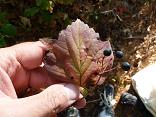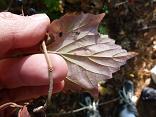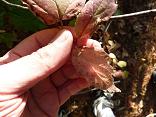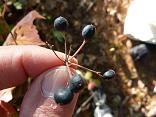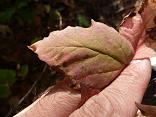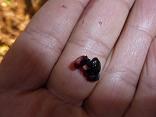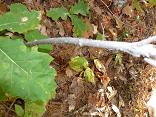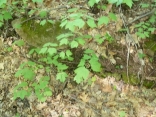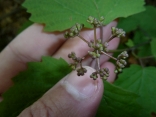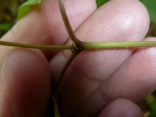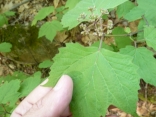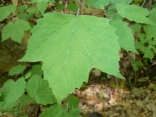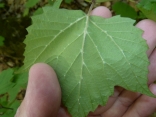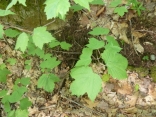Mapleleaf Viburnum is a 3-6 foot tall shrub with maple-like leaves (3 lobes). The leaves are arranged opposite of each other. The tops of the leaves, edges of the leaves and especially the twigs are hairy. The backs of the leaves have tiny black dots. In the Spring, the plant produces a flat-topped cluster of white flowers (not shown: see here). In the Fall, purple-black berries (drupes) are produced. These berries have a single seed. According to Steve Brill, these berries are unpalitable and inedible.
There are two other species of Viburnums in New Hampshire that have maple-like leaves: Squashberry (Viburnum edule) which has red berries, occurs at higher elevations in the Northern part of the state and has only slightly lobed leaves; and European Cranberrybush (Viburnum opulus) which has red berries and glands near the top of the petiole (leaf stalk) (unlike the Mapleleaf Viburnum). This web page at Cornell University is helpful in differentiating between Viburnum species: Which Viburnum is it?
Not all Viburnums have stipules (fang-like appendages) at the base of the leaves. But the Viburnums with maple-like leaves have stipules. You can see the thin whitish stipules next to the buds in the first picture above on the left if you click on it to expand and click on it again to expand it further. If it did not have stipules, it would most likely be a young maple tree.
